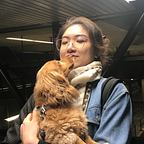[RJS] Multisensory Experiences
This is a journal series to briefly jot down notes and reflections after reading books for future reference inspired by Ali Abdaal’s Youtube video — How I Remember Everything I Read. Since notes are situated in context, this is not a summary or shortened version of the book. If you’re interested, please read the original book as everyone has their own interpretation. Also please support the writers~
Authors: Carlos Velasco, Marianna Obrist
Tags: Non-Fiction; Technology; Research
Link to the book: OXFORD University Press
How I Discovered It
I found this book online when I was taken the Designing For Virtual Reality course at the University of Washington taught by Elin Björling.
Who Should Read It?
Anyone who’s interested in mixed reality and creating multi-sensory experiences
🎨 Impressions
This book explains the concept of multi-sensory experiences, its components, toolkits to analyze, and implications and questions to consider when designing in the future.
A well-explained framework is provided to dissect experiences and senses in our daily life and to augment, enhance, and artificially create these experiences.
A very concise, clearly written introduction to the world of mixed reality with many detailed examples provided along the way.
🚀 The Book in 3 Sentences
- Senses are the gateways for us to gather information from the world; therefore, they are essential to our experiences
- Technologies can augment, enhanced, and transform our lives. Book provided a continuum of reality and virtuality.
- We need to consider the implications of the multi-sensory experiences. The book mentioned three laws
- Do no harm (Why, What, When)
- Fairness (Whom)
- Transparency (How, Who)
☘️ How the Book Changed Me
- This book provided me a holistic view of analyzing experiences and how my senses help me acquire information from the outside world. It made me be more aware of my surroundings and my body mechanism.
- The provided framework and xSenses cards are great tool for future project when related to multi-sensory experiences.
- The idea of challenges of over-customization and optimization of experiences intrigued me. This has been a hot topic in these years.
✍️ My Top 3 Quotes
Velasco, Carlos, and Marianna Obrist. Multi-sensory Experiences: Where the Senses Meet Technology. Oxford University Press, 2020
“… we interface with the world around us with our senses, and therefore, they are a gateway for acquiring information from us (our bodies) and the world around us (our environments). Our experiences are not only determined by the physical (e.g., light) and chemical (e.g. flavor) information our senses capture from the environment, but also are formed through the value or meaning that our brain gives to such information (how it captures our attention, how it makes us feel, and what it means to us), which is, at the same time, influenced by previous experiences we have had. In that sense, each of our experiences are unique in a way and different from those that others have as they arise from the interactions that we have with our environments and the impressions that remain.” (Velasco & Obrist, 2020, p. 19)
“Multi-sensory experiences are impressions formed by specific events where someone has carefully crafted the sensory elements in them.” (Velasco & Obrist, 2020, p. 26)
“We have agency in this world, and as such, we have the responsibility to help shape it” (Velasco & Obrist, 2020, p. 69)
📒 Summary + Notes
Concepts help analyze & explain how the senses interact with each other while we perceive the world (Velasco & Obrist, 2020, p. 24)
1) Temporal congruence, 2) Spatial congruence, 3) Semantic congruence, 4) Cross-modal correspondences, 5) Sensory dominance, 6) Sensory overload
Components of multi-sensory experiences
1) Background — why, 2) Impressions — what, 3) Events — when, 4) Sensory elements — how, 5) Someone — Who, 6) Receiver — Whom
References
Link to buy the book through the publisher:
The blog written by the author:
